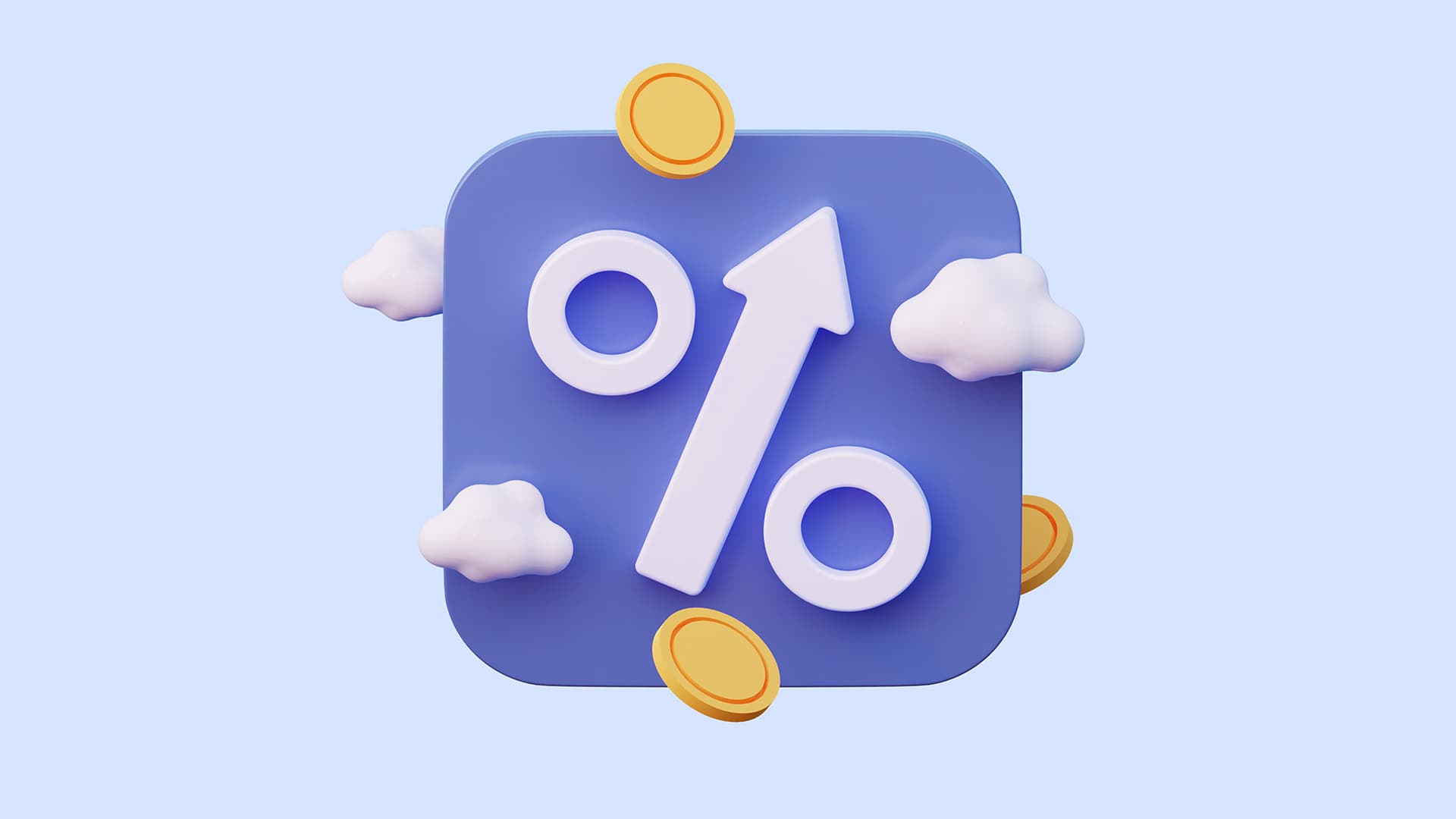
Posted on: 12th June 2024 in Finance
Have you ever borrowed money from a bank, invested or opened a savings account?
If so, you will have encountered interest rates, which play a bigger role in your daily life than you might think. That’s why understanding them and how they work is essential.
In this article, we look at what interest rates are, how they work and their impact on your finances.
To avoid this article turning a complex lesson on economics, let’s keep things simple.
Interest rates are an indicator. They show how much it will cost you to borrow money and how much you could earn if you decide to put it into a savings account.
When you borrow money for a mortgage, a credit card and so on, you typically repay the original amount plus interest. The higher the interest, the more you repay.
Things are a little different for savers. With a savings account, the interest rate dictates how much the bank will pay you for depositing your money with them. This time, the higher the rate, the more they will pay you.
While there are different types of interest rates, which we will get into later, rates are often expressed as a percentage of the principal amount.
For example, if you borrow £1,000 and the annual interest rate is 10%, you would owe £1,100 after a year. If you saved £1,000 and the annual rate was 2%, you would have £1,020 after a year.
Interest rates and inflation are terms we have heard a lot over the last couple of years, and people often confuse the two.
Unlike interest rates, which dictate the cost of borrowing or the rewards of saving, inflation is the rate at which the price of goods and services increases. In the UK, the Consumer Price Index (CPI) published by the Office for National Statistics (ONS) is the main measure of inflation.
A good example of how inflation works is to look at the increase in everyday items from one year to the next. If the rate of inflation was at 4% and a loaf of bread cost £1 last year, the price would have increased to £1.04.
While interest rates differ from the inflation rate, the two are linked. When inflation is high, interest rates typically follow suit. This is because central banks such as the Bank of England (BoE) often raise rates to bring inflation under control.
When interest rates increase, people tend to tighten their purse strings, so less money is spent in a given country. When spending falls, price increases are slowed, resulting in lower inflation.
There are several contributing factors on which interest rates are based. The biggest factor is the Bank Rate.
The Bank Rate, sometimes known as the Base Rate, is set by central banks such as the Bank of England and often has the greatest influence on interest rates.
The Bank Rate is typically increased to control inflation. When it goes up, interest rates usually follow, meaning borrowing becomes more expensive. On the flip side, savers generally get more attractive rates.
In addition to the Bank Rate, lenders often consider the risk factor when determining interest rates on financial products such as loans. Typically, the higher the risk of the loan not being paid back, the higher the interest rate.
The following interactive chart from the Bank of England shows how interest rates have changed over time for various financial products. You can add different products from the drop-down menu.
Different types of interest rates apply depending on whether you are borrowing or saving. Below, we break down some of the key interest rate terminology.
This type of interest usually applies to savings accounts, mortgages or short-term loans. It is based on the original savings or loan amount, not accounting for withdrawals or payments.
Let’s say you borrow £400,000 for a mortgage with an annual interest rate of 4%. This would amount to £16,000 in interest payments each year.
Unlike simple interest, compound interest is a little more complex.
Compound interest is interest on interest. And over the years, it can really add up. For example, if you had £10,000 in a savings account with a yearly compounding interest rate of 2%, you would have £10,200 after one year. However, you would get 2% interest on £10,200 the following year.
This differs from simple interest, where the rate only applies to the initial sum. As a saver, compound interest has a snowball effect on your money, allowing it to grow faster.
As we said, this type of interest is complex. To learn more, read our article on compound interest.
As the name suggests, a fixed interest rate remains constant throughout the life of the loan or investment or until the fixed rate term ends. This type of interest provides predictability for both borrowers and lenders.
Variable rates can go up or down. They are usually influenced by the Bank Rate and can apply to savings and loan products.
The Annual Percentage Rate, or APR, applies to mortgages, credit cards, and other types of loans. It includes interest and upfront fees, giving a complete picture of how much it will cost to borrow.
The Annual Equivalent Rate (AER) applies to savings. It shows how much interest you could earn on your money each year.
The likely answer here is yes.
Most people borrow money, whether for a mortgage on a home, an investment property, or even a credit card. When interest rates go up, borrowing gets more expensive.
Bank of England data shows that in September 2021, the average five-year fixed-rate mortgage rate was 1.28%. The same fixed-rate mortgage had soared to 5.24% in just two years.
A separate report from Zoopla revealed that mortgage repayments have increased by 60% over the last three years.
But it’s not all negative; savings rates have also increased. According to data from Finder, the average 1-year fixed-rate ISA was 0.29% in July 2021 and increased to 4.57% by April 2024.
The bottom line is that it’s essential to understand how interest rates work and the impact they can have on your finances.
Having the right strategy in place can make all the difference in reaching your financial goals. Speak to our specialists at Holborn and get the expert advice you need to reach yours.
We have 18 offices across the globe and we manage over $2billion for our 20,000+ clients
Get started
Digital Assets: From Fringe to Framework A Responsible View for Internationally Mobile Investors Executive Summary Digital assets have moved from the fringes of finance into mainstream discussion. The arrival of...
Read more
Across the global expatriate market, one product category is showing unprecedented momentum in 2025: Indexed Universal Life (IUL). As client expectations move toward solutions that combine long-term protection, tax-efficient wealth...
Read more
Chancellor Rachel Reeves delivered her second Autumn Budget in dramatic circumstances, after the Office for Budget Responsibility (OBR) accidentally released its full economic outlook online 45 minutes before her speech....
Read more
In today’s world, much of our lives are lived online. From email accounts and social media profiles to digital wallets and online businesses, we’re building a digital legacy—often without realising...
Read more